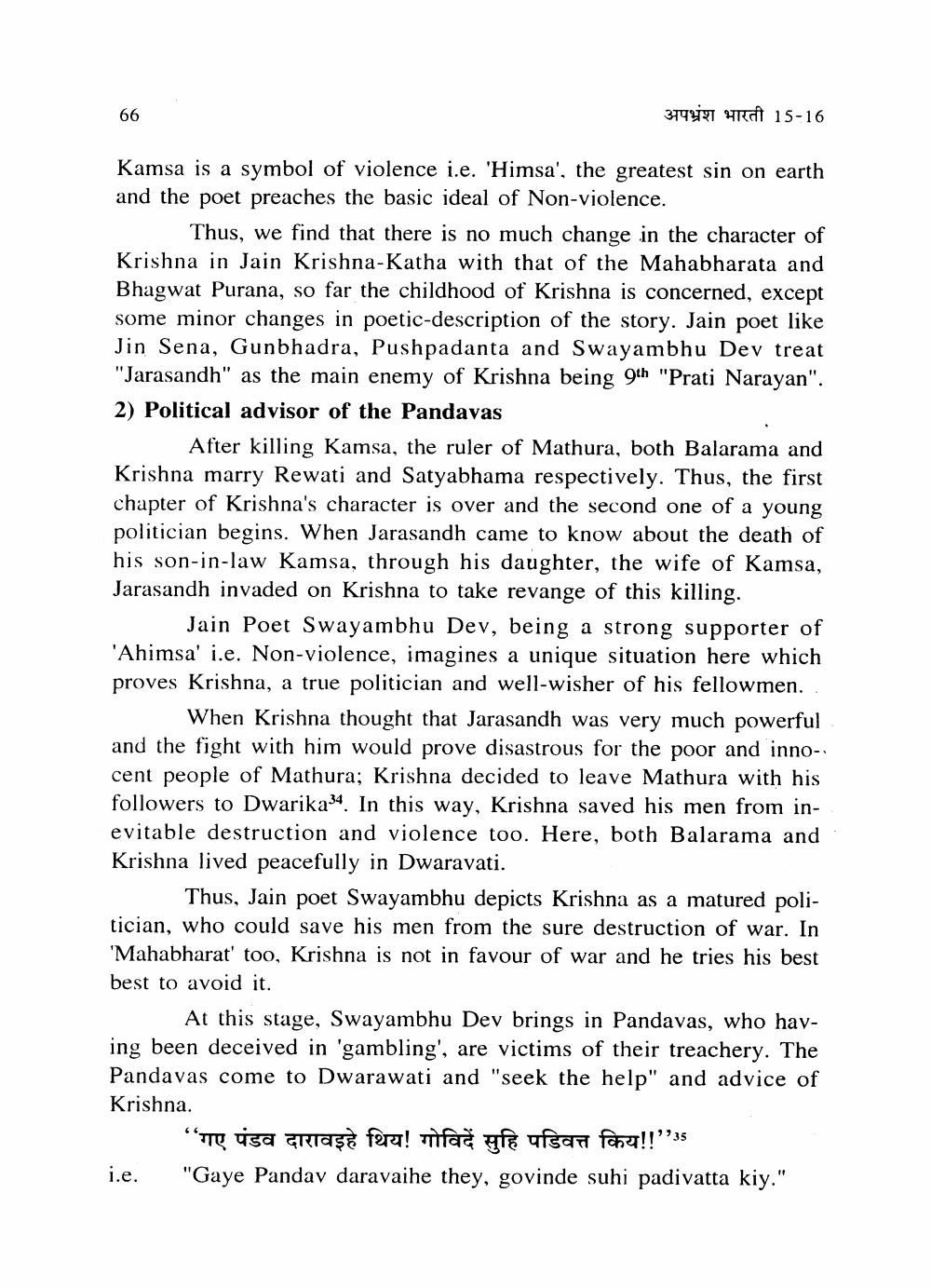________________
अपभ्रंश भारती 15-16
Kamsa is a symbol of violence i.e. 'Himsa', the greatest sin on earth and the poet preaches the basic ideal of Non-violence.
66
Thus, we find that there is no much change in the character of Krishna in Jain Krishna-Katha with that of the Mahabharata and Bhagwat Purana, so far the childhood of Krishna is concerned, except some minor changes in poetic-description of the story. Jain poet like Jin Sena, Gunbhadra, Pushpadanta and Swayambhu Dev treat "Jarasandh" as the main enemy of Krishna being 9th "Prati Narayan". 2) Political advisor of the Pandavas
After killing Kamsa, the ruler of Mathura, both Balarama and Krishna marry Rewati and Satyabhama respectively. Thus, the first chapter of Krishna's character is over and the second one of a young politician begins. When Jarasandh came to know about the death of his son-in-law Kamsa, through his daughter, the wife of Kamsa, Jarasandh invaded on Krishna to take revange of this killing.
Jain Poet Swayambhu Dev, being a strong supporter of 'Ahimsa' i.e. Non-violence, imagines a unique situation here which proves Krishna, a true politician and well-wisher of his fellowmen. When Krishna thought that Jarasandh was very much powerful and the fight with him would prove disastrous for the poor and innocent people of Mathura; Krishna decided to leave Mathura with his followers to Dwarika34. In this way, Krishna saved his men from inevitable destruction and violence too. Here, both Balarama and Krishna lived peacefully in Dwaravati.
Thus, Jain poet Swayambhu depicts Krishna as a matured politician, who could save his men from the sure destruction of war. In 'Mahabharat' too, Krishna is not in favour of war and he tries his best best to avoid it.
At this stage, Swayambhu Dev brings in Pandavas, who having been deceived in 'gambling', are victims of their treachery. The Pandavas come to Dwarawati and "seek the help" and advice of Krishna.
"गए पंडव दारावइहे थिय! गोविदें सुहि पडिवत्त किय!!'' 35
i.e. "Gaye Pandav daravaihe they, govinde suhi padivatta kiy."




